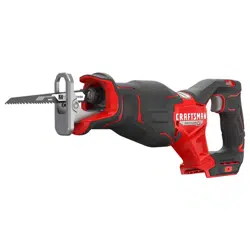Loading ...
Loading ...
Loading ...

7
ENGLISH
• Do not operate the charger with a damaged cord
orplug–have them replaced immediately.
• Do not operate the charger if it has received a sharp
blow, been dropped or otherwise damaged in any
way. Take it to an authorized servicecenter.
• Do not disassemble the charger; take it to an
authorized service center when service or repair
is required. Incorrect reassembly may result in a risk of
electric shock, electrocution orfire.
• Disconnect the charger from the outlet before
attempting any cleaning. This will reduce the risk of
electric shock. Removing the battery pack will not reduce
thisrisk.
• NEVER attempt to connect 2 chargerstogether.
• The charger is designed to operate on standard
120V household electrical power. Do not attempt to
use it on any other voltage. This does not apply to the
vehicularcharger.
WARNING: Shock hazard. Do not allow any liquid to
get inside the charger. Electric shock mayresult.
WARNING: Burn hazard. Do not submerge the
battery pack in any liquid or allow any liquid to enter
the battery pack. Never attempt to open the battery
pack for any reason. If the plastic housing of the
battery pack breaks or cracks, return to a service center
for recycling.
CAUTION: Burn hazard. To reduce the risk of injury,
charge only CRAFTSMAN rechargeable battery packs.
Other types of batteries may overheat and burst
resulting in personal injury and propertydamage.
CAUTION: Under certain conditions, with the charger
plugged into the power supply, the charger can be
shorted by foreign material. Foreign materials of a
conductive nature, such as, but not limited to, grinding
dust, metal chips, steel wool, aluminum foil or any
buildup of metallic particles should be kept away from
the charger cavities. Always unplug the charger from
the power supply when there is no battery pack in the
cavity. Unplug the charger before attempting toclean.
Charging a Battery
1. Plug the charger into an appropriate outlet.
2. Insert and fully seat battery pack. Green charging light(s)
will continuously blink while charging.
3. Charging is complete when the green charging light(s)
remain(s) continuously ON. Battery pack can be left in
charger or removed.
WARNING: Only charge batteries in air temperature
over 40°F (4.5°C) and below 105°F (40.5°C).
4. Charger will not charge a faulty battery pack, which may
be indicated by the charging light(s) staying OFF. Take
charger and battery pack to an authorized service center
if light(s) stay(s) OFF.
NOTE: Refer to label near charging light(s) on charger for
blink patterns.
NOTE: To remove the battery pack, some chargers require
the battery pack release button to be pressed.
Indicators for all chargers except CMCB101
Charging
Fully Charged
Hot/Cold Pack Delay
Only CMCB101 Charger Indicators
Charging
Fully Charged
Hot/Cold Pack Delay
Hot/Cold Pack Delay
When the charger detects a battery pack that is too hot
or too cold, it automatically starts a Hot/Cold Pack Delay,
suspending charging until the battery pack has reached an
appropriate temperature. The charger then automatically
switches to the pack charging mode. This feature ensures
maximum battery packlife.
A cold battery pack may charge at a slower rate than a
warm batterypack.
The hot/cold pack delay will be indicated by the green
light(s) continuing to blink and with the red light
continuously ON or blinking. Once the battery pack has
reached an appropriate temperature, the red light will turn
OFF and the charger will resume the charging process.
Electronic Protection System
Li-Ion tools are designed with an Electronic Protection
System that will protect the battery pack against
overloading, overheating or deep discharge. The tool will
automatically turn off and the battery pack will need to be
recharged.
Important Charging Notes
1. Longest life and best performance can be obtained if
the battery pack is charged when the air temperature
is between 65°F – 75°F (18° C– 24°C). DO NOT charge
when the battery pack is below +40°F (+4.5°C), or
above +104°F (+40°C). This is important and will
prevent serious damage to the batterypack.
2. The charger and battery pack may become warm to the
touch while charging. This is a normal condition, and
does not indicate a problem. To facilitate the cooling of
the battery pack after use, avoid placing the charger or
battery pack in a warm environment such as in a metal
shed or an uninsulatedtrailer.
3. If the battery pack does not charge properly:
a. Check operation of receptacle by plugging in a lamp
or other appliance;
b. Check to see if receptacle is connected to a light
switch which turns power off when you turn out
the lights;
Loading ...
Loading ...
Loading ...
